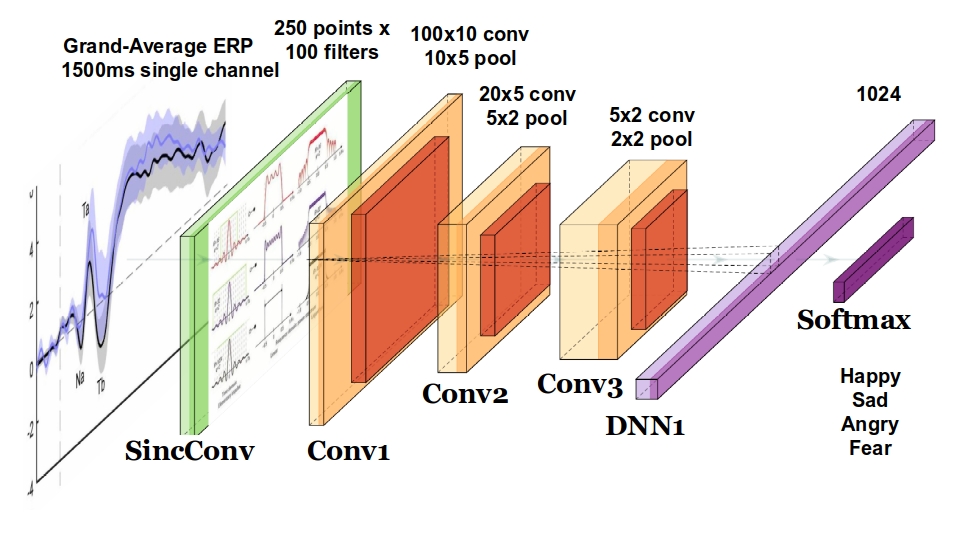Interpretable SincNet-based Deep Learning for Emotion Recognition from EEG brain activity
Machine learning methods, such as deep learning, show promising results in the medical domain. However, the lack of interpretability of these algorithms may hinder their applicability to medical decision support systems. This paper studies an interpretable deep learning technique, called SincNet. SincNet is a convolutional neural network that efficiently learns customized band-pass filters through trainable sinc-functions. In this study, we use SincNet to analyze the neural activity of individuals with Autism Spectrum Disorder (ASD), who experience characteristic differences in neural oscillatory activity. In particular, we propose a novel SincNet-based neural network for detecting emotions in ASD patients using EEG signals. The learned filters can be easily inspected to detect which part of the EEG spectrum is used for predicting emotions. We found that our system automatically learns the high-$\alpha$ (9-13 Hz) and $\beta$ (13-30 Hz) band suppression often present in individuals with ASD. This result is consistent with recent neuroscience studies on emotion recognition, which found an association between these band suppressions and the behavioral deficits observed in individuals with ASD. The improved interpretability of SincNet is achieved without sacrificing performance in emotion recognition.
PDF Abstract


